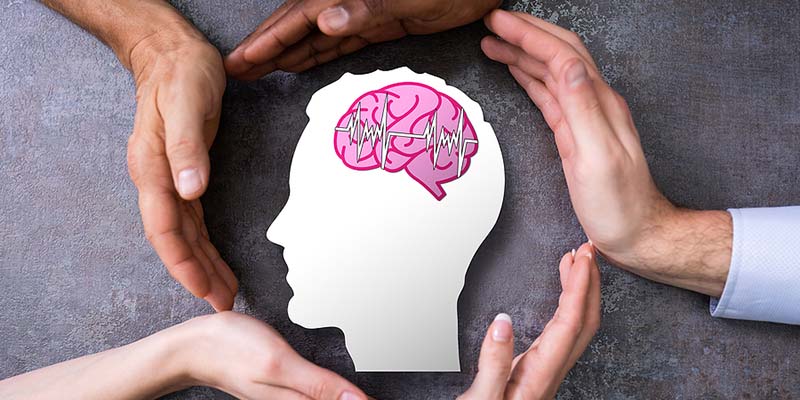Conditions & Treatments

Herniated Disc Surgery

Kyphoplasty

Spinal Deformity Surgery

Carpal Tunnel Release

Brain Disease

Ulnar Nerve
Southeast Brain & Spine Surgery was formed to help those who have disorders of the:
We maintain multiple surgeons and a full staff to ensure that you are always well-cared for.
So what kind of illnesses do Neurosurgeons treat? Neurosurgeons specialize in the diagnosis and surgical treatment of disease of the brain, neck, back and peripheral nervous system and vascular malformations.
Skull & Brain
Southeast Brain and Spine of Columbus, GA provides the most highly-skilled brain surgeons in our area. It takes a specialized team of brain specialists and state-of-the-art technology to successfully treat brain and skull diseases and injuries.
We treat:
- Arteriovenous malformation
- Brain tumors—benign and malignant
- Brain injury
- Craniosynostosis
- Head injury
- Hydrocephalus
- Intracerebral hemorrhage
- Neoplasms of the skull (benign and metastatic)
- Pituitary tumors
- Skull fractures
- Trigeminal and glossopharyngeal neuralgia
- VP shunt

Spine, Neck & Back
If you have spine, neck or back injuries or diseases, Southeast Brain and Spine of Columbus, GA offers help for you. Our experienced spine neck and back surgeons utilize state-of-the-art technology to successfully treat your spine, neck and back problems.
We treat:
- Bone spurs
- Disc disease
- Degeneration of spine
- Disc diesease
- Herniated disc
- Spine tumors
- Spinal injuries
- Spinal instability
- Spinal stenosis
- Vertebral compression fracture
- Scoliosis
- Peripheral nerves injury & disease
- Carpal tunnel
- Ulnar nerve
Your Title Goes Here
Herniated Disc Surgery
A herniated disk is an injury of the spine. You have a series of bones called vertebrae in your spine, stretching from the base of your skull to your tailbone. Between your vertebrae are round cushions called disks. The disks act as buffers between your bones, allowing you to bend and move easily. When one of these disks tears or leaks, it’s called a herniated disk.
Are herniated disks common?
Every year, up to 2% of people get a herniated disk. Herniated disks are a leading cause of neck, arm, back, and leg pain (sciatica). They can happen anywhere along the spine, but herniated disks most often occur in the lower back or the neck. It’s rare for a herniated disk to be in the mid-back.
Who gets herniated disks?
People ages 30 to 50 are most likely to get a herniated disk. The problem affects men twice as often as women. Other risk factors include:
- Sitting for long periods in the same position
- Being overweight
- Lifting heavy objects
- Repetitive bending or twisting motions for work, sports, or hobbies
- Smoking
What causes a herniated disk?
Disks have soft, gel-like centers and a firmer outer layer, like a jelly doughnut. With time, the outer layer weakens and can crack. A herniated disk happens when the inner jelly substance pushes through the crack. The leaked material may press on nearby spinal nerves.
Several factors can contribute to a disk rupture, including:
- Aging
- Excessive weight
- Repetitive motions
- Sudden strain from improper lifting or twisting
What are the symptoms of a herniated disk?
Herniated disk symptoms vary depending on where the problem is in your spine. Symptoms worsen with movement and get better with rest.
Herniated Disc Surgery
The standard surgical procedure for treatment of a herniated disc is laminotomy and discectomy. Our surgeons will remove a small piece of the bone during the procedure to access the spinal canal (laminotomy). Next, they remove a portion of the herniated disc (discectomy). Spinal fusion may be required in certain cases.
For lumbar disc herniation patients requiring herniated disc surgery, Southeast Brain and Spine offers the most advanced minimally invasive treatment options using extremely small incisions and allowing outpatient treatment. During a tubular microdiscectomy, a robotic microscope is used to remove the offending herniated disc through an incision of 16-18mm. Endoscopic discectomy is a procedure that utilizes a specialized camera inserted into the spinal canal through a ¼ inch incision and dedicated instruments to treat damaged discs. Benefits of these minimally-invasive approaches include decreased pain, quicker recovery, and an enhanced cosmetic result.
Southeast Brain and Spine is recognized for excellence in minimally invasive spine procedures. We offer a full spectrum of neurosurgical care and the latest approaches to spine surgery and the treatment of herniated discs. You’ll appreciate convenient appointment times, a location near you, and a personalized focus to meet your needs before, during, and after your procedure. Call us today at (706) 321-9300 to schedule a consultation.
Spinal Deformity Surgery
Southeast Brain and Spine Surgery are committed to helping our patients feel healthy and confident. With our minimally invasive spinal deformity surgery, we can help you find relief from chronic pain and spinal issues. We pride ourselves on our ability to connect with our patients personally as we work to heal their spinal problems.
Our spine deformity surgery treatment will help you find lasting relief from your spinal pain. With decades of experience and exceptional expertise, we’re confident that we can provide you with the help you need and deserve.
Spinal deformities can be painful and inhibit daily activities. Southeast Brain and Spine’s skilled team specializes in spine deformity surgery. We can help you manage your deformity or correct it to give you lasting relief and a chance at a better life.
For cutting-edge treatment and caring, compassionate attention, you can count on the experienced team at Southeast Brain and Spine. We look forward to helping you take control of your health through minimally invasive spinal deformity surgery.
Common Deformities
As spine specialists, we work with a variety of spinal deformities, including:
- Scoliosis
- Kyphosis
- Flat back syndrome
- Post-laminectomy syndrome
- Pseudarthrosis
- Spinal fractures or compressions
From motion preservation techniques to minimally invasive spinal deformity surgery, we are experienced in performing minimally invasive procedures. As a result, you will recover faster after the surgery and return to the activities you once enjoyed.
Reasons We May Recommend Surgery
Some spinal deformities are treated with non-invasive methods like physical therapy. At Southeast Brain and Spine, we want to ensure you get the precise treatment for your specific problem. And while surgery is not always our first option, we will recommend it if:
- Physical therapy hasn’t improved your condition
- The deformity is getting worse
- The deformity has caused other problems like spinal cord compression
- You experience severe pain regularly
In these cases and others, minimally invasive spine deformity surgery is the best option to correct the problem and provide long-term relief of its painful symptoms.
Excellence Is Always Our Goal
If you have back pain, we can help. Southeast Brain and Spine is one of the most respected spine surgery centers in the southeast. We have built our practice on years of experience, innovative research, compassion, and satisfied patients. We have worked with spinal deformities for more than 40 years.
Southeast Brain and Spine is recognized for excellence in minimally invasive spine deformity surgery. We offer a full spectrum of neurosurgical care and surgical approaches. With Southeast Brain and Spine, you will appreciate convenient appointment times and personalized focus to meet your needs before, during, and after your procedure. Call us today to schedule an appointment at (706) 321-9300.
Brain Diseases
Brain diseases can prove to be a challenging time, even for the strongest of us. For this reason, and many others, the doctors and staff at Southeast Brain and Spine have the experience, expertise, and knowledge to help you. Our approach is always from a professional and compassionate position. We understand that the idea of brain disease can stir many emotions. We want you to know we are here for you every step of the way.
Brain Infections
Brain infections can potentially be a life-altering condition that may lead to permanent disability or death if not treated promptly. The most common brain infections consist of the following conditions:
Meningitis: a condition that consists of an inflammatory response around the lining of the brain or spinal cord. The symptoms manifest in unusual neck stiffness, headache, fever, and mental confusion. Antibiotics, steroids, or oxygen therapy may be administered to help recover from this condition.
Encephalitis is a condition with inflammation of the brain tissue, usually due to an infection. Encephalitis and meningitis often coincide, resulting in a condition known as meningoencephalitis. Antiviral drug therapy is generally prescribed along with fluid replacement to ensure the patient is adequately hydrated.
Brain abscesses are a condition in which a localized area of the brain becomes infected with bacteria. Antibiotics and surgery are usually required to treat this condition.
Brain Seizures
Seizures are an extremely frustrating and debilitating condition that affects many people. Epilepsy is the technical name of the condition, and it’s often characterized by recurring seizures caused in part by abnormal, excessive electrical activity in the brain. Some common causes of epilepsy include head injuries, brain infections, and strokes. The treatment methods for epilepsy are broad and range from surgical procedures to medication and even necessary dietary changes in some cases.
Brain Trauma
Many incidents can cause brain trauma, yet one thing remains common amongst nearly all brain trauma cases; it involves some type of impact. Below is a list of common brain trauma cases:
Concussion: This instance of brain trauma results in a temporary disturbance of brain function where a person will sometimes “blackout” and become unconscious. They’ll then come to consciousness with little to no memory of the events which occurred. Traumatic head injuries typically cause concussions and often result in headaches and possible temporary to permanent concentration and memory loss issues. Therapeutic treatment approaches include self-care, rest, and rehabilitation. There may be a need for surgical intervention to treat swelling and prevent further complications in rare cases.
Traumatic Brain Injury: this type of brain injury may result in permanent brain damage, memory loss, mental impairment, and personality or mood alterations. The treatment for this specific brain injury includes rehabilitation, sometimes a diuretic to remove excess fluid from the body, or surgery in the form of a decompressive craniectomy.
Intracerebral Hemorrhage: this condition causes bleeding inside the brain, which typically occurs after a traumatic brain injury or a possible stroke from a case of high blood pressure. The treatment options for this condition consist of self-care, supportive care (IV treatment, reversal of anticoagulants, monitoring in ICU, etc.), medications (antihypertensive drug or diuretic), possible surgery in the form of “clipping” (a procedure where a surgeon places a clip of sorts to seal off a bulge in the artery wall and stop bleeding), and rehabilitation therapy to regain motor skills and functions and cognitive abilities.
Brain Tumors, Masses, & Increased Pressure
Tumors, masses, and increased pressure can sometimes be a great cause for concern. Learn more about some of the most common conditions associated with this area of brain disease below.
Brain Tumor: this type of tumor is any abnormal tissue found within the brain. Whether the brain tumor is malignant or benign, it will most likely cause some issue to arise over time. Brain tumors commonly cause issues from the pressure they exert upon some regions of the brain as they continue to grow larger and larger. The preferred treatment method for general brain tumors is to perform a craniotomy if deemed safe and feasible. Chemotherapy or radiation therapy is typically the next recommended treatment option if that’s not an option.
Glioblastoma: this condition presents one of the most significant challenges to medical professionals as it’s one of the most aggressive forms of brain tumors and can be very difficult to treat effectively. Treatment options consist of surgery, chemotherapy, and radiation treatment. Unfortunately, even with aggressive treatment options, glioblastoma proves to be one of the most fatal forms of brain cancer.
Hydrocephalus is a condition where the fluid that is supposed to be properly circulating throughout the brain and spine accumulates within the skull. Surgery, in the form of a ventriculostomy, and diuretics are the most common forms of treatment for this condition.
Normal Pressure Hydrocephalus: this form of hydrocephalus causes various symptoms, ranging from dementia to urinary incontinence. The pressure inside the brain will remain normal, even with an increase in fluid. Treatment options for this condition will often include diuretics and a surgical intervention where a shunt is placed within the brain ventricle, allowing fluid to drain properly.
Pseudotumor cerebri (false brain tumor): this condition is genuinely perplexing for many members of the neurology community as it presents the same symptoms as an actual brain tumor, yet there isn’t a brain tumor present. Symptoms are identical to those of an actual brain tumor. Treatment options include diuretics, weight loss, and possible surgery to relieve cranial pressure.
Kyphoplasty
Kyphoplasty is a minimally invasive procedure to treat the pain associated with compression fractures of the vertebrae or spine bones. These fractures are typically caused by:
- Osteoporosis
- spinal tumors
- trauma
What is Kyphoplasty?
Kyphoplasty is a procedure used to stabilize a fractured vertebra and reduce pain. The vertebra is stabilized with a special acrylic bone cement injected into the fractured bone.
Why Kyphoplasty?
Kyphoplasty is often recommended to treat compression fractures of the vertebra after other treatments like bed rest, pain medication, or a back brace do not relieve pain. Kyphoplasty is a minimally invasive procedure that often eliminates the need for a hospital stay and results in faster healing than surgery. The procedure enhances comfort and mobility, including:
- Significantly relieving back pain
- Restoring alignment of the spine
- Allowing for pain-free return to normal activity
What Can You Expect During the Procedure?
Kyphoplasty is a minimally invasive procedure typically performed as an outpatient.
Once you are admitted for kyphoplasty, you may be connected to monitors that will track your heart rate, blood pressure, and pulse during the procedure. An anesthesia team member will meet with you to explain the type of anesthesia used to make you comfortable during the procedure. The length of the procedure will depend upon the number of vertebrae treated. Typically, the procedure will last about an hour.
You will be positioned face down, and we will make a tiny incision near the fractured vertebra in your back. A hollow needle will be inserted through the spinal muscles and carefully positioned within the fractured vertebra. The needle is guided by special X-ray technology called fluoroscopy.
During kyphoplasty, before the cement is injected, a small balloon is passed through the hollow needle. The balloon is inflated inside the vertebra to create space for the cement. Once the balloon is deflated and removed, the cement is injected.
Recovery
You will spend some time in the recovery room after the procedure and then be discharged to go home.
Once you arrive at your home, you may feel immediate pain relief in your back. There may be some soreness in the area where the needle was injected. This pain should diminish over a few days.
Southeast Brain and Spine is recognized for excellence in minimally invasive spine procedures. We offer a full spectrum of neurosurgical care and the latest approaches to spine surgery and the treatment of herniated discs. You’ll appreciate convenient appointment times, a location near you, and a personalized focus to meet your needs before, during, and after your procedure. Call us today at (706) 321-9300 to schedule a consultation.
Carpal Tunnel Release for Carpal Tunnel Syndrome
The carpal tunnel is a small pathway located within the palm side of your wrist. The median nerve passes through this space, and it’s this nerve that’s responsible for the sensations we feel in our thumb and every finger besides the pinky. When pressure is put on this pathway, resulting in a pinched median nerve, the condition is known as carpal tunnel syndrome. Carpal tunnel syndrome can lead to a variety of symptoms, including:
- Numbness or tingling in the thumb, index, middle, and ring finger
- Weakness in your hands
- Pain in your wrist that extends up your arm and down into your fingers
Causes of Carpal Tunnel Syndrome
Anything that can compress the median nerve could lead to carpal tunnel syndrome, whether a fracture or swelling in the wrist. The condition tends to happen to women more often than men and usually appears in people aged 30 to 60.
The following factors may not directly lead to carpal tunnel syndrome, but they have been associated with the condition:
- Genetics
- Severe diabetes
- Hypothyroidism
- Pregnancy
- Rheumatoid arthritis
- Infections
- Fluid retention
- Tools that vibrate
- Repetitive motion
Although it is commonly thought that activities like typing can cause carpal tunnel syndrome, it has not been medically confirmed. However, any motion that involves excessive wrist movements could eventually lead to an injury.
Carpal Tunnel Release
A carpal tunnel release is surgery to relieve pressure on the nerve located inside the carpal tunnel, an area on the palm side of the wrist that supplies sensation to the thumb, index, middle, and half the ring finger. This is accomplished by cutting a band of fibrous tissue that holds the wrist joint together (transverse ligament) and forms the top of the carpal tunnel. With the pressure alleviated, the nerve can heal, and the painful wrist syndrome is corrected. The carpal tunnel is a small area formed by the three wrist bones and the transverse ligament. A nerve and the tendons that curl (flex) the fingers pass through this area. Any type of swelling or inflammation can irritate the carpal tunnel, putting pressure on the nerve.
Understanding the procedure
There are two effective methods to perform carpal tunnel release. Both are performed as an outpatient procedure, meaning no hospital stay is required.
The most common is an open technique which involves a short incision or cut, about two or three inches on the palm side of the wrist. Our surgeons will then locate the carpal ligament, which is on top of the carpal tunnel. This ligament will then be cut to release the pressure on the nerve which passes beneath it.
If you have numbness or tingling in the thumb, index, middle, and ring finger, weakness in your hands, or pain in your wrist that extends up your arm and down into your fingers, we can help.
Southeast Brain and Spine is one of the most respected spine surgery centers in the southeast. We have built our practice on years of experience, innovative research, compassion, and satisfied patients. We have worked with spinal deformities for more than 40 years.
Southeast Brain and Spine is recognized for excellence in treating carpal tunnel syndrome with ulnar release surgery. We offer a full spectrum of neurosurgical care and surgical approaches. With Southeast Brain and Spine, you will appreciate convenient appointment times and personalized focus to meet your needs before, during, and after your procedure. Call us today to schedule an appointment at (706) 321-9300.
Ulnar Nerve Release Surgery
Ulnar nerve release surgery is a procedure for cubital tunnel syndrome – also known as ulnar nerve entrapment. Cubital tunnel syndrome is a condition in which nearby tissue puts pressure on the nerve inside the cubital tunnel, a narrow space through which the ulnar nerve passes around the elbow. One of the arm’s main nerves, the ulnar nerve, travels from the neck to the fingers and is responsible for the sensitive area known as the “funny bone.” The narrowness of the cubital tunnel and minimal soft tissue make the ulnar nerve especially vulnerable to irritation.
Cubital tunnel syndrome can be caused by repetitive stressors, such as frequently bending or leaning on the elbow, fluid buildup, or trauma to the elbow. Symptoms of cubital tunnel syndrome include pain, numbness, and a “pins and needles” tingling in the elbow that can extend to the ring finger and little finger. Other symptoms include muscle weakness and impaired muscle control in the fingers. When these symptoms do not improve with nonsurgical therapies, Ulnar nerve release surgery may be recommended.
What is Ulnar Nerve Release?
Ulnar nerve release is similar to the surgery performed for carpal tunnel syndrome; the ulnar nerve release operation helps reduce pressure on the ulnar nerve by cutting and separating the overlying ligament. The ligament may gradually grow back together post-surgery, but there will be more space in the ulnar tunnel. Like the surgery performed for carpal tunnel syndrome, the ulnar nerve release decompression operation helps reduce pressure on the ulnar nerve by cutting and separating the overlying ligament. The ligament may gradually grow back together post-surgery, but there will be more space in the ulnar tunnel.
Why Ulnar Nerve Release Surgery?
Surgical cubital tunnel release may be recommended if nonsurgical treatment does not help symptoms. The procedure can enhance comfort and mobility, including:
- Relief of pain and numbness
- Prevention of permanent nerve damage
- Improvement of hand function
Southeast Brain and Spine is recognized for excellence in treating cubital tunnel syndrome with ulnar release surgery. We offer a full spectrum of neurosurgical care and surgical approaches. With Southeast Brain and Spine, you will appreciate convenient appointment times and personalized focus to meet your needs before, during, and after your procedure. Call us today to schedule an appointment at (706) 321-9300.
Get in Touch
Midtown Medical Park
1538 Thirteenth Avenue, Suite B300
Columbus, GA 31901
Hours
Monday - Thursday 8:30 - 5:00
Friday 8:30 -12:30
